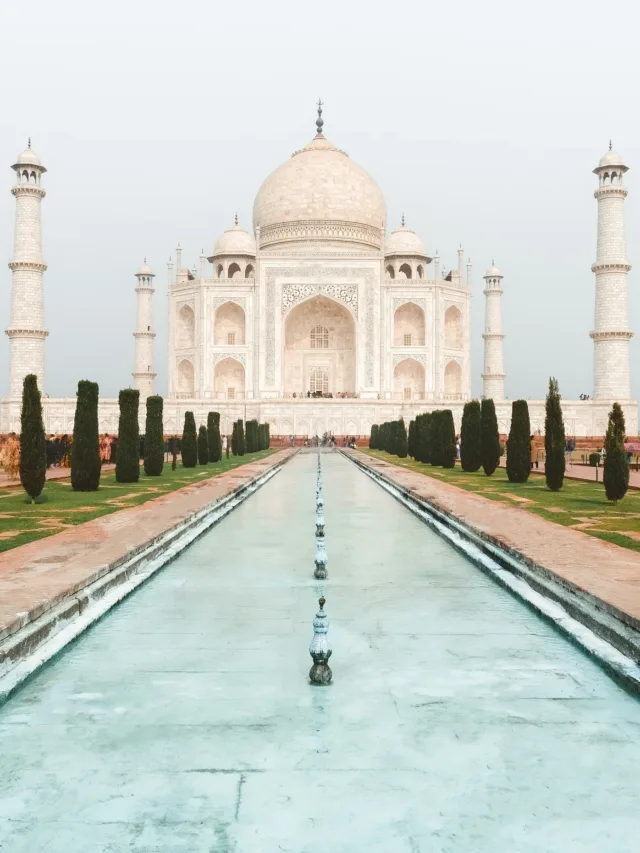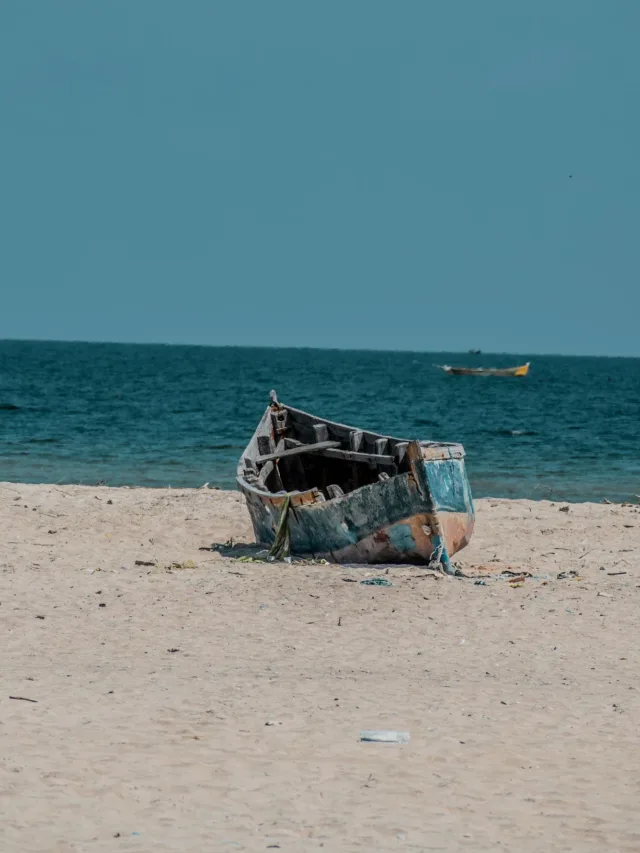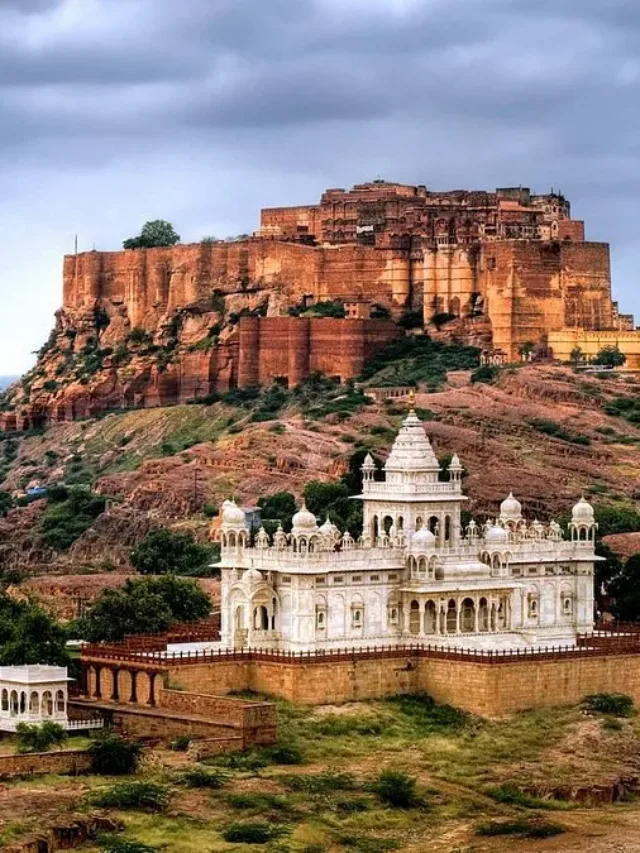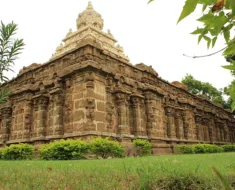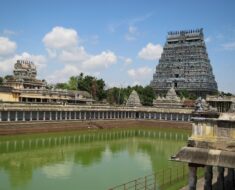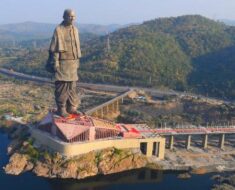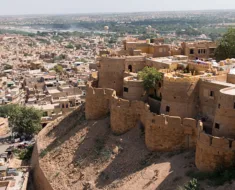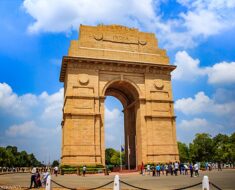Rajasthan, the land of vibrant colours, rich history, and majestic palaces, is home to several UNESCO World Heritage Sites. The heritage sites in Rajasthan, immerse the visitors into a truly royal experience and showcase the rich history, heritage and culture of Rajasthan.
Here is a list of the UNESCO World Heritage Sites in Rajasthan
- Jaipur Heritage City
- Jantar Mantar
- Keoladeo National Park
- Chittorgarh Fort – Chittorgarh
- Kumbhalgarh Fort – Rajsamand
- Ranthambore Fort – Sawai Madhopur
- Gagron Fort – Jhalawar
- Amer Fort – Jaipur
- Jaisalmer Fort – Jaisalmer
Jaipur Heritage City

The historical pink city of Jaipur was enlisted as a UNESCO World Heritage site on 6th July 2019 becoming the second city in India after Ahmedabad to earn this recognition. The vibrant Pink City, Jaipur was founded by Maharaja Sawai Jai Singh II in 1727.
Jaipur is renowned for its magnificent palaces, majestic forts, colourful bazaars, stunning architecture and delicious Rajasthani cuisine. The walled city of Jaipur is one of the major tourist destinations in Rajasthan and is visited by tourists from all across the World.
The heritage of the Pink City extends beyond its palaces and forts to its festivals, events and bustling bazaars, where one can immerse oneself in the sights, sounds, and smells of traditional Rajasthani culture. The vibrant markets of Johari Bazaar, Tripolia Bazaar, and Bapu Bazaar offer a treasure of handicrafts, textiles, jewellery, and spices, making shopping a delightful experience.
The colourful celebrations of Holi, Diwali, and Teej further showcase Jaipur’s cultural vibrancy and hospitality.
Read More: 15 Famous Historical Places in Rajasthan
Jantar Mantar

The name Jantar Mantar is derived from the Sanskrit words Yantra, meaning “instrument or machine”, and mantrana meaning “consult, calculate.” Thus, Jantar Mantar means ‘calculating instrument’.
Jantar Mantar is believed to be one of the oldest astronomical observatories in the world. Located in the heart of Jaipur city is a collection of 19 astronomical instruments. It is one of the UNESCO World Heritage Sites in Rajasthan.
It has the world’s largest stone sundial known as the Samrat Yantra and other stone assemblies that help to observe and interpret the position of celestial bodies and calculate local time.
It is the largest of the five astronomical observatories built by Maharaja Sawai Jai Singh II and is one of the most famous historical places in Rajasthan.
Keoladeo National Park

The Keoladeo National Park, formerly known as the Bharatpur Bird Sanctuary is located in Bharatpur, Rajasthan. It is a UNESCO World Heritage Site, known for hosting a diverse range of migratory birds, especially during the winter season.
The national park was declared a protected sanctuary in 1971 and established as a national park on March 10, 1982. Due to its exceptional avian biodiversity, it was also designated as a UNESCO World Heritage Site in 1985.
Spread over an area of 29 sq km and having at least 400 avian species, Keoladeo National Park is a famous nature travel destination and is a paradise for nature lovers, wildlife photographers and ornithologists.
Chittorgarh Fort
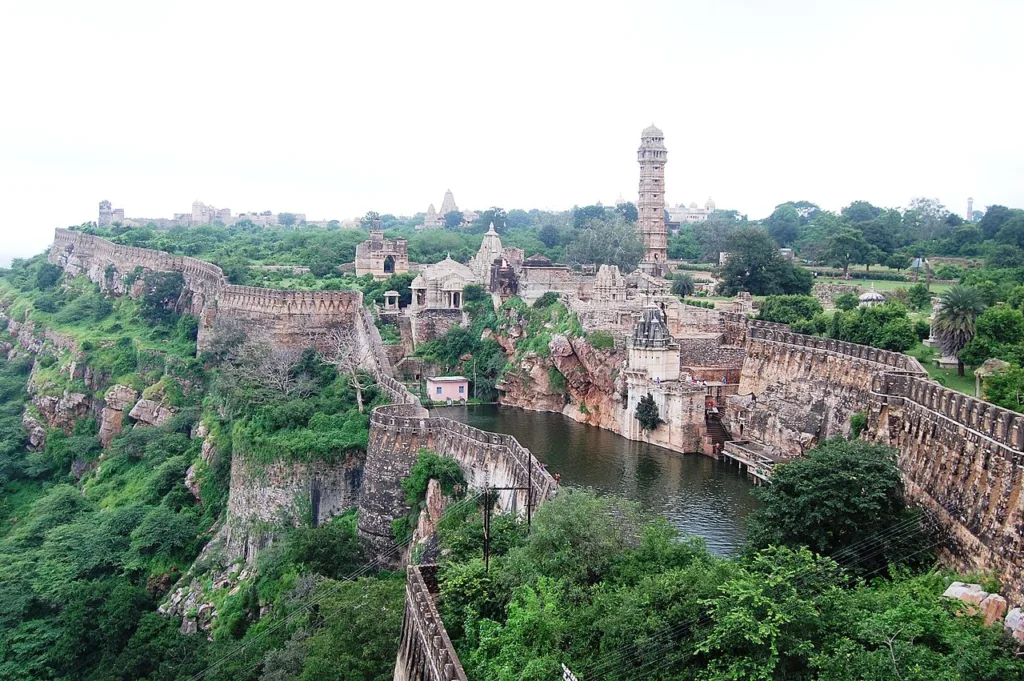
Chittorgarh Fort is a UNESCO World Heritage Site in Rajasthan and one of India’s largest forts spread over an area of 691.9 acres. The fort holds significant historical, and cultural importance and is a testament to the valour and resilience of the Rajput warriors.
It is believed to be built in the 7th century AD by the Mauryans, the fort gets its name from the Mauryan ruler, Chitrangda Mori. Chittorgarh Fort is one of the most visited historical places in Rajasthan.
The fort complex has 65 historic structures including 4 palaces, 19 temples, 4 memorials and several water bodies. The fort is surrounded by massive walls and is famous for its seven gates namely Padan Gate, Ganesh Gate, Hanuman Gate, Bhairon Gate, Jodla Gate, Lakshman Gate and the main gate named after Lord Ram.
Read More: Mehrangarh Fort Jodhpur – Rajasthan
Kumbhalgarh Fort
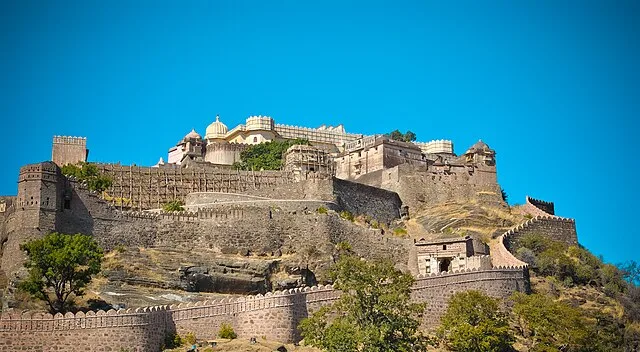
Kumbhalgarh Fort is located in the foothills of the Aravalli Mountain Range about 48 km from Rajsamand city. The majestic fort is known for its 38-kilometre wall, the second longest in the world after the Great Wall of China.
The fort is the birthplace of Maharana Pratap, a great Rajput king.
It was built by Mewar King Rana Kumbha in the 15th century and is also known by the name Mewar Fortress. The fort is designated as one of the UNESCO World Heritage Sites in Rajasthan.
The front walls of the fort are 4.5 m, and it has seven fortified gateways. There are over 360 Hindu and Jain temples within the fort, indicating the religious tolerance of the rulers and how they patronized the Jains, encouraging their culture in the kingdom.
Ranthambore Fort

Ranthambore Fort is located within the Ranthambore National Park in Sawai Madhopur. The national park around the fort used to be the hunting grounds of the Maharajahs of Jaipur until the Independence of India.
The majestic fort provides a panoramic view of the surrounding Ranthambore National Park and is a UNESCO World Heritage Site under the group Hill Forts of Rajasthan. The fort was built in 944 AD by the Chauhan rulers and has witnessed many sieges and battles.
The fort is protected by a large wall with seven gates for entry and exit. There are many structures like Toran Dwar, Mahadeo Chhatri and Sametonki Haveli and also temples dedicated to Ganesha, Shiva and Ramlalaji constructed in the 12th and 13th centuries within its premises.
Gagron Fort

Gagron Fort is a masterpiece of Rajput architecture. The fort is surrounded by the Kali Sindh and Ahu rivers on all three sides and a moat on the fourth side. Situated in Jhalawar the fort was built by Rajput King Bijaldev Singh Dod in the 12th century and is a stunning example of a hill and water fort.
It is the only fort in North India surrounded by water and has been named the Jaladurga (Water Fort) of India. The fort also boasts three ramparts as compared to the traditional forts having only two ramparts. It has two colossal main gates and some other important gates inside the fort are Bhairavi Pol, Ganesh Pol, Kishan Pol, Nakkarkhana and Selekhana.
The Grand Fort complex has many important structures and temples like the Janaana Mahal, Rang Mahal, Diwan-i-Aam, Diwan-e-Khas, and Madhusudan Mandir inside it.
The historical fort has withstood 14 battles and 2 Jauhars of queens. The fort was also conquered by Sher Shah and Akbar. Akbar made the fort a headquarters and later gave it to Prathviraj of Bikaner.
Read More: Neermahal – The Largest Water Palace in India
Amber Fort

Set amidst the hills and overlooking the Maota Lake, the magnificent Amber Fort also known as Amer Fort is one of the top tourist attractions of Jaipur. The Amber Fort is an extensive palace complex that has been built with pale yellow and pink sandstone, and with white marble.
The Amber Fort was constructed by Raja Man Singh in 1592 AD and later expanded and renovated by Raja Jai Singh I. The Fort is a great example of Rajput architecture and some of its structures and works have Mughal architecture influence.
The fort is laid out on four levels, each having a courtyard. The palace complex has many structures like the Diwan-e-Aam, the Diwan-e-Khas, the Palace of Man Singh I, the Sila Devi temple, the Sheesh Mahal, the Sukh Mahal, the Tripolia Gate, and the Lion Gate.
Jaisalmer Fort

Jaisalmer Fort perched atop Trikuta Hill offers stunning views of Jaisalmer City and is one of the UNESCO World Heritage Sites under the group Hill Forts of Rajasthan
The fort is a 250-foot-tall structure and is also known as the Golden Fort or Sonar Qila. It was built by the Rajput ruler Rawal Jaisal in 1156 AD and was reinforced by subsequent rulers of Jaisalmer.
The fort is made of yellow sandstone, which gives it a golden hue and is considered one of the oldest continuously inhabited forts in the world with about a quarter of the old city’s population still living within its walls. Its walls are about 30 meters high and are fortified with bastions. The fort has four fortified entrances, one of which was previously guarded by a cannon.

